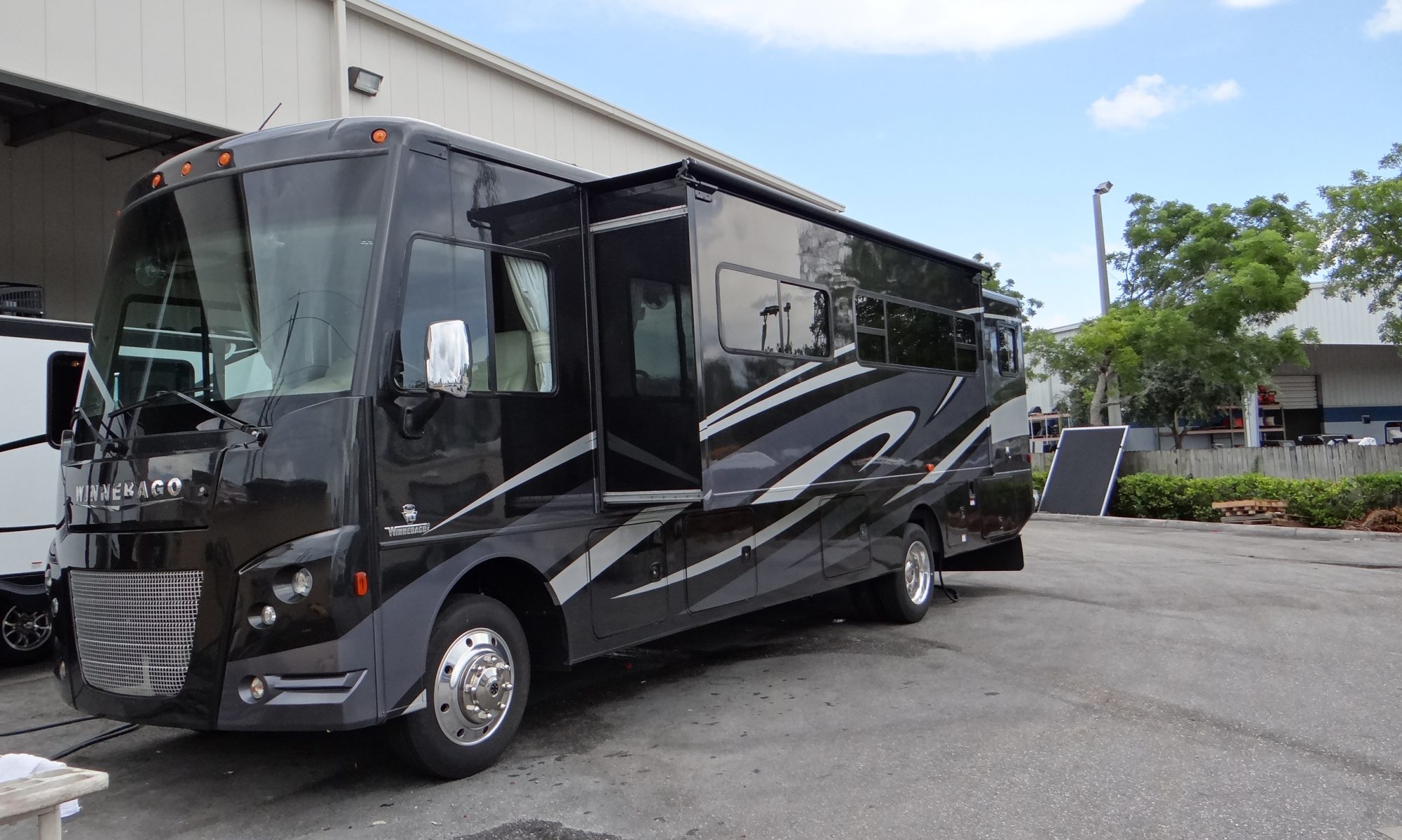Ever since I read an Eagle comic recreation of the Battle of Little Bighorn when I was a young boy, I have always wanted to visit the site of the only battle in which the Indians actually won!
So we moved on from Livingston to Billings, which was slightly off route but got us close enough to the battlefield to make my wish come true.

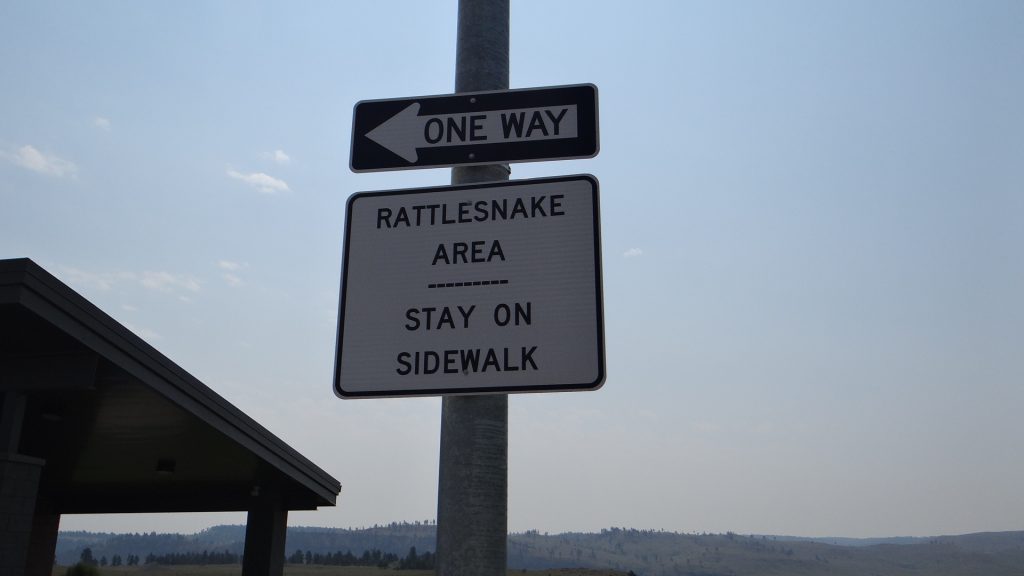

We drove to the battlefield the next day. I hadn’t realised until we got there that it was quite a long battlefield. I always envisaged it was just the hill on which the Last Stand took place but it was in actual fact spread out over 5 miles, after a crucial decision by Custer to split his command in two. One group of men under Major Reno was sent to attack the Indian encampment and the other group under General Custer continued West to try and flank the village and capture them in a pincer movement.

You can see here where the main 7th Cavalry force split on the right. Unfortunately for General Custer, Major Reno’s force was beaten back and forced to retreat back over the river and take up a defensive position in the hills above.
General Custer not knowing that continued west, splitting his group again to attack the village while he continued west. That force under Lt. James Calhoun was harried by Indian forces, losing many men, until they too turned back to the hills and rejoined General Custer’s main group.
General Custer then turned to attack the village, only to be met by superior Indian forces and was forced to retreat (dotted blue lines) back to where they were surrounded and lost their lives in the Last Stand.
Major Reno’s group knew nothing about this, as they were over 4 miles from that area, so they consolidated their position and beat off Indian attacks until they were saved by the advancing columns of Generals Terry and Gibbon.

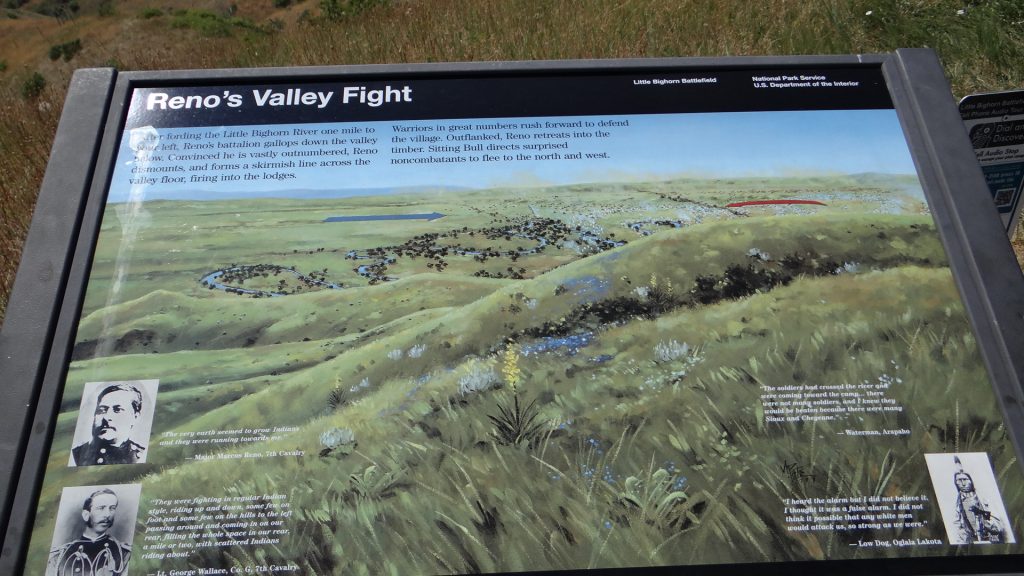


While moving west General Custer was harried all the way by Indian braves. Wherever a white marker is positioned it is approximately where a 7th Cavalry soldier fell. Most of them have no names on them, as all they knew at the time was a soldier was killed here.


They re-joined General Custer who began his attack on the village but were met by a large Indian force, so they too had to retreat back up into the hills.

And then General Custer tried to defend the hill top that became known as the “Last Stand” hill.

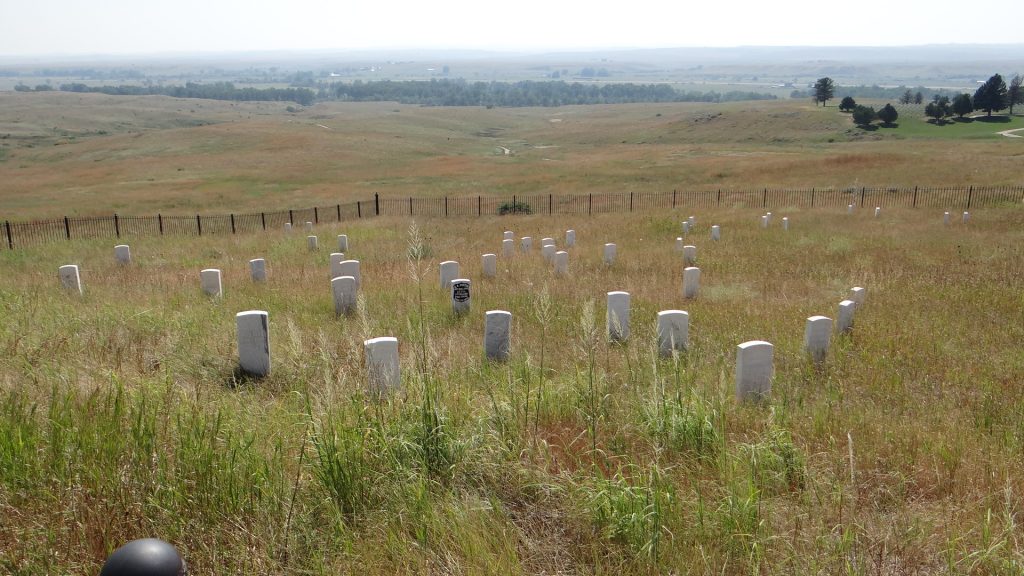
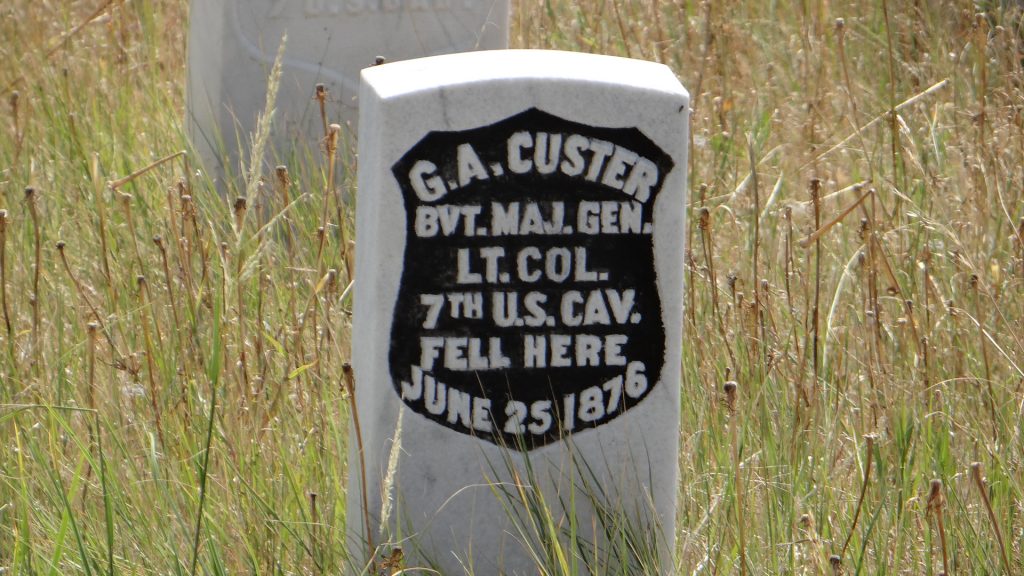
The memorial lists the 268 men made up of 7th Cavalry soldiers, Indian scouts and civilian workers who died at Little Bighorn.


It should not be forgotten that many Indians also died here and to this end they have started to place markers for the Indian dead as well.
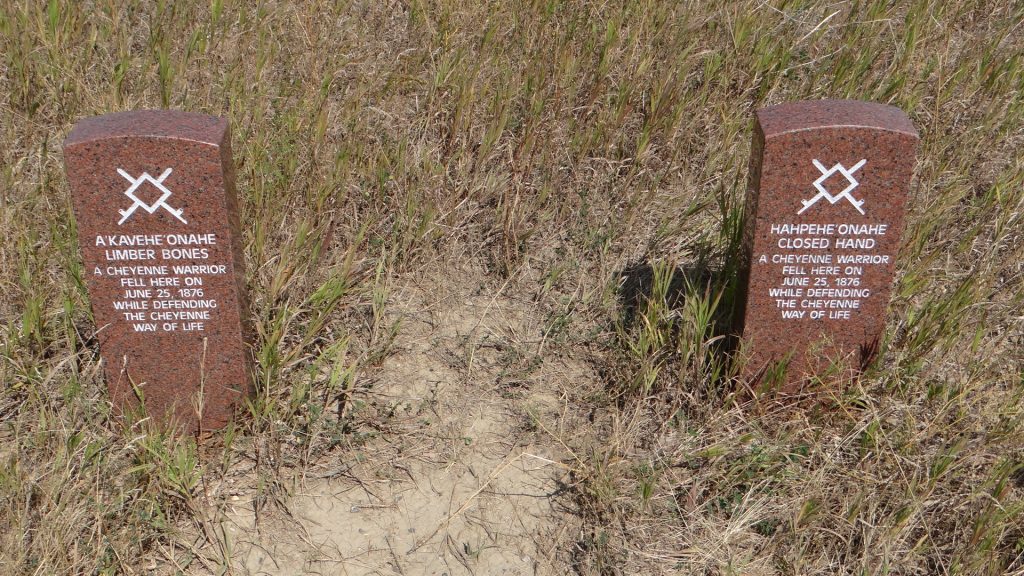
There is also an Indian Memorial.

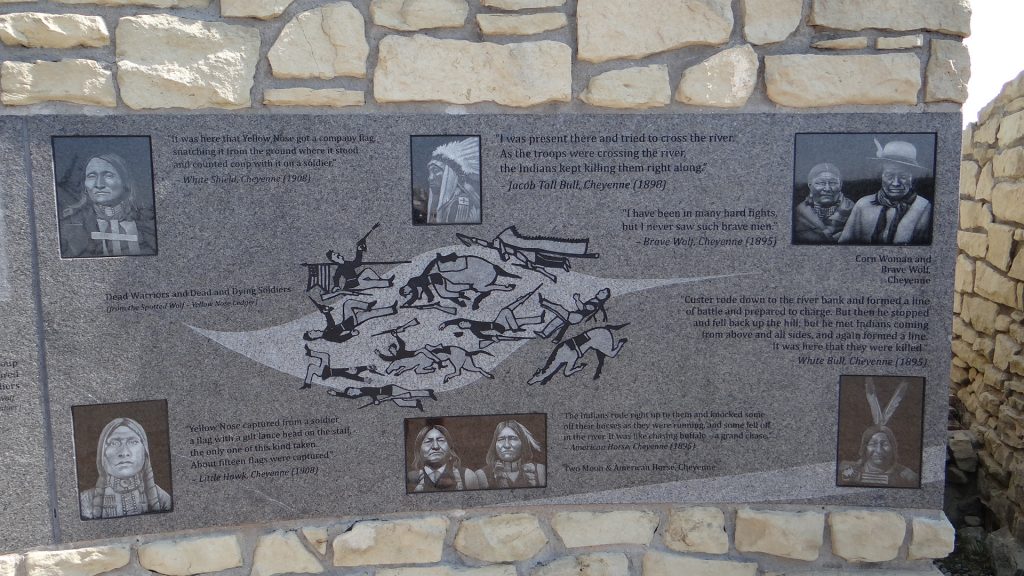

And there was one other group that lost their lives at the battle, the horses, and they are remembered too.
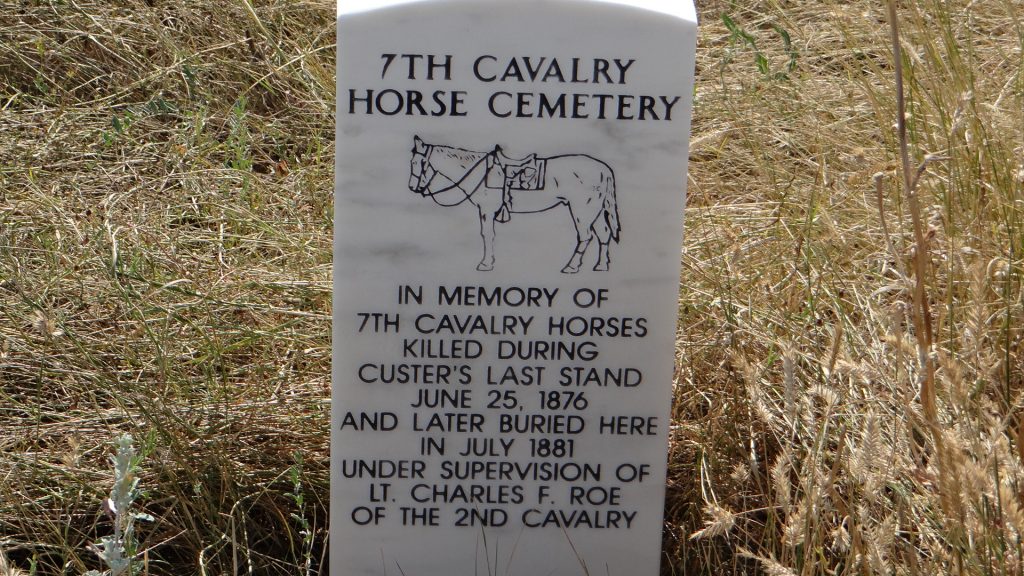
All in all a very sobering place to visit. From my point of view I always thought of General Custer, after reading that Eagle comic story, as someone to be looked up to. This battlefield memorial makes you think of all the people and animals involved and makes you stop and think whether he deserves that image, and could all this have been avoided.
From here we turned South again and headed to Cody, home of William F Cody sometimes called “Buffalo Bill”.
